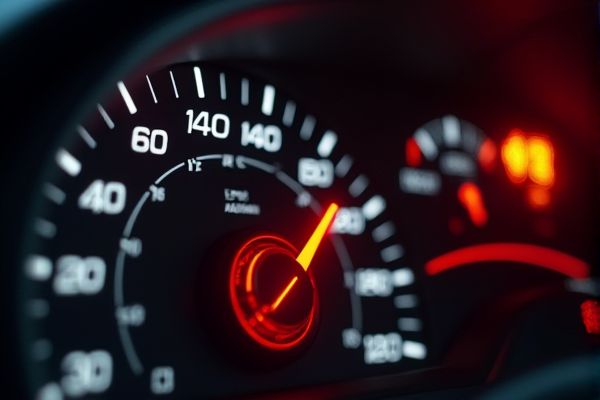
The Mini Paceman's check engine light indicates that the vehicle's onboard diagnostics have detected an anomaly in the engine system, often pointing to issues such as sensor malfunctions, misfires, or emissions control problems. Prioritizing a data-driven approach, it is essential to run a diagnostic scan to extract error codes--commonly P0171 or P0300--that help pinpoint the malfunction, ensuring timely repairs and maintaining optimal vehicle performance.
Mini Paceman check engine light on meaning
Loose Gas Cap
A loose, broken, or missing gas cap can reduce fuel pressure and trigger the check engine light.
Malfunctioning Fuel Injection System
Issues with the fuel injection system can cause the check engine light to illuminate.
Defective Emissions Control Parts
Problems with emissions control components can lead to the check engine light turning on.
Dirty Mass Airflow Sensor (MAF)
A dirty or faulty MAF sensor can disrupt engine performance and trigger the light.
Defective Head Gasket
A broken head gasket can cause significant engine issues and illuminate the check engine light.
Faulty Oxygen Sensor
A malfunctioning oxygen sensor can lead to incorrect fuel mixture and trigger the light.
Bad Spark Plugs
Worn-out or dirty spark plugs can cause engine misfires and turn on the check engine light.
Vacuum Leaks
Leaks in the vacuum system can lead to performance issues and illuminate the check engine light.
Ignition System Faults
Problems with the ignition system, including spark plug wires or ignition coils, can cause the light to turn on.
Old Battery
A weak or old battery can sometimes trigger the check engine light due to electrical system issues.
Fuel and Air Metering System Problems
Issues with how fuel and air are metered can lead to engine performance problems and the check engine light.
Transmission Issues
In some cases, transmission problems can also trigger the check engine light.
For car users
If your Mini Paceman's check engine light comes on, immediately verify that the gas cap is securely fastened and that all essential fluid levels are within range, as these are common issues that can trigger the light. Next, use an OBD-II scanner or visit a trusted mechanic to obtain error codes for a precise diagnosis, ensuring any necessary repairs are addressed promptly for safe driving.
Ignoring the check engine light
Ignoring the Mini Paceman's check engine light can allow minor issues such as sensor malfunctions, exhaust problems, or engine misfires to worsen, leading to significantly reduced performance, fuel efficiency, and even severe engine or catalytic converter damage. Prolonging diagnosis and repair may result in costly fixes, safety risks, and potential long-term damage to essential vehicle systems, emphasizing the importance of immediate professional assessment.
How to reset?
Connect an OBD-II scanner to the Mini Paceman's diagnostic port, retrieve and document any stored fault codes, then use the scanner's reset function to clear the errors and turn off the check engine light. After resetting, complete a drive cycle to verify that the light remains off, and if it reappears, consult a professional mechanic to address potential underlying issues.
The Mini Paceman's check engine light can signal issues ranging from sensor malfunctions to engine misfires, with repair costs typically estimated between $150 and $1,000 depending on the diagnostic findings and specific repairs needed. Prioritizing timely inspection and accurate diagnosis not only minimizes further damage but also enhances fuel efficiency and overall vehicle performance, ultimately saving on long-term maintenance expenses.
Future prevention
Ensure regular maintenance--such as scheduled oil changes, timely sensor checks, and a thorough diagnostic of fuel and emissions systems--to catch issues early, avoid engine misreads, and drive conditions that could trigger the Mini Paceman's check engine light. Additionally, using high-quality fuel and promptly addressing minor repairs can optimize engine performance and prevent costly breakdowns down the line.
